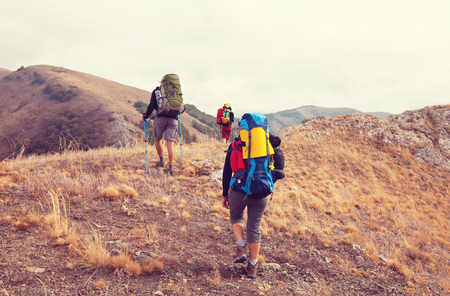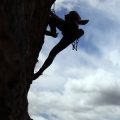1. Right of Way: Who Yields to Whom?
Hitting the trail in the United States is more than just enjoying nature—its about sharing space with others. To keep everyone safe and happy, there are some unwritten rules when it comes to who should yield on American trails. These guidelines help hikers, bikers, horseback riders, and anyone moving up or down a path to navigate shared spaces smoothly.
Yielding Basics on American Trails
When different groups meet on the trail, knowing who steps aside keeps things running smoothly. Here’s a quick look at the common right-of-way rules:
| Trail Users | Who Yields? | What to Do |
|---|---|---|
| Hiker vs. Hiker (Uphill vs. Downhill) | Downhill yields to Uphill | If you’re heading downhill, step aside for people climbing up—they have the harder job! |
| Biker vs. Hiker | Biker yields to Hiker | Bikers should slow down and give hikers the right of way, even if it means stopping. |
| Biker vs. Horseback Rider | Biker yields to Horseback Rider | Bikes stop and let horses pass quietly; sudden moves can spook a horse. |
| Hiker vs. Horseback Rider | Hiker yields to Horseback Rider | Step off the trail on the downhill side and wait for horses to pass. |
| Biker vs. Biker (Uphill vs. Downhill) | Downhill yields to Uphill | The biker going downhill should move aside for someone pedaling uphill. |
The Logic Behind Trail Etiquette
The main idea is safety and respect for everyone’s effort. Uphill travelers need more momentum and energy, so they get priority. Horses are big and can be unpredictable, so both hikers and bikers give them plenty of space. Bikers move faster but must watch out for slower travelers.
Quick Tips for Sharing the Trail:
- If in doubt, be polite and yield—it’s always appreciated.
- Communicate! Say “hello,” “on your left,” or “passing” when coming up behind someone.
- Stay aware of your surroundings and wear earbuds at a low volume or use just one earbud.
- If you’re in a group, hike single-file on narrow paths to let others pass easily.
Why It Matters
Understanding these unwritten rules isn’t just about being nice—it helps prevent accidents, keeps the flow of traffic steady, and ensures everyone enjoys their time outdoors. When everyone follows these simple guidelines, America’s beautiful trails stay welcoming for all kinds of adventurers.
2. Leave No Trace: Respecting Nature and Others
One of the most important unwritten rules on American trails is the principle of “Leave No Trace.” This is more than just picking up after yourself—its a mindset that helps protect nature and ensures everyone can enjoy the outdoors. Lets break down what this means in a way thats easy to remember and apply during your hikes.
What Does Leave No Trace Mean?
Leave No Trace (LNT) is a set of seven core principles developed to guide outdoor enthusiasts in minimizing their impact on nature. Even though you might not see signs everywhere, these guidelines are widely respected across U.S. trails.
The Seven Principles of Leave No Trace
| Principle | How to Practice It |
|---|---|
| Plan Ahead and Prepare | Check trail regulations, pack essentials, and know your route. |
| Travel and Camp on Durable Surfaces | Stick to marked trails and established campsites to avoid damaging plants. |
| Dispose of Waste Properly | Pack out all trash, food scraps, and litter—even if it isn’t yours. |
| Leave What You Find | Don’t pick flowers, remove rocks, or take souvenirs; leave things as they are for others to enjoy. |
| Minimize Campfire Impact | Use camp stoves instead of fires when possible; keep fires small and only in designated rings. |
| Respect Wildlife | Observe animals from a distance, don’t feed them, and secure your food. |
| Be Considerate of Other Visitors | Keep noise down, yield the trail when needed, and give space to fellow hikers. |
Packing Out Trash: A Must-Do Habit
Packing out your trash is non-negotiable. In many parts of the U.S., its common to hear the phrase “pack it in, pack it out.” That means anything you bring with you—wrappers, bottles, fruit peels—should go back with you. Leaving trash behind not only spoils the beauty but also harms wildlife who might try to eat it.
Respecting Wildlife: Observe, Don’t Disturb
The American wilderness is home to incredible animals, but they need their space. Always watch quietly from afar and never feed them. Feeding wildlife can make them sick or cause them to depend on people for food, which isn’t safe for anyone.
Leaving What You Find: Preserve the Experience for Everyone
If every hiker took a wildflower or an interesting rock, there would be nothing left for future visitors. By leaving things as you find them—whether its artifacts or plants—you help keep the trail special for everyone who comes after you.

3. Trail Communication and Safety
The Importance of Clear Communication
When hiking or biking on American trails, clear communication is key to keeping everyone safe and comfortable. Most trails are shared by walkers, runners, cyclists, families with children, and sometimes even horses. It’s important to let others know what you’re doing, especially when passing or approaching from behind.
Polite Verbal Cues: What to Say and When
Using polite verbal cues is a big part of American trail etiquette. Simple words can prevent accidents and show respect for fellow trail users. Here are some common phrases:
| Situation | Phrase to Use | Purpose |
|---|---|---|
| Passing someone on the left | “On your left!” | Alerts the person ahead that you will pass them on their left side. |
| Coming up behind someone quietly | “Excuse me,” or “Coming up behind you!” | Makes your presence known so you don’t startle them. |
| Praising good trail manners | “Thank you!” or “Appreciate it!” | Shows gratitude when others yield or make space. |
| Greeting fellow hikers or bikers | “Good morning!” or “Hello!” | Cultivates a friendly trail atmosphere. |
Signaling and Staying Aware of Your Surroundings
Besides speaking up, using non-verbal signals is also important. Make eye contact if possible before passing, slow down around blind corners, and always be ready to stop if needed. If you’re biking, use a bell in addition to calling out.
Tips for Staying Aware:
- Keep music volume low so you can hear others approaching.
- Watch for signs indicating right-of-way, closures, or wildlife warnings.
- If using headphones, wear only one earbud so you stay alert.
- Check behind you before changing direction or stopping suddenly.
- If hiking in a group, walk single-file in narrow sections to allow others to pass easily.
The American Way: Courteous and Safe Trails for Everyone
A little courtesy goes a long way on U.S. trails. Using simple greetings like “On your left!” or “Excuse me!” isn’t just polite—it’s an unwritten rule that keeps everyone safe and helps create a positive outdoor community. Remember these tips next time you hit the trail!
4. Managing Pets and Kids on the Trail
Bringing Pets: What You Need to Know
Many Americans love to bring their dogs along for a hike, but there are some important guidelines to follow. Most trails require pets to be kept on a leash, both for their safety and out of respect for wildlife and other hikers. Ignoring leash rules can lead to fines or cause uncomfortable encounters with other trail users. Always check posted signs at trailheads for specific regulations.
Pet Etiquette Basics
| Rule | Why It Matters |
|---|---|
| Keep pets leashed | Prevents chasing wildlife, protects your pet, and keeps other hikers comfortable |
| Pick up after your pet | Keeps trails clean and prevents pollution; most American trails have “pack it out” expectations |
| Yield the trail | Step aside with your pet when others pass, especially if your dog is excitable or nervous around strangers |
| No excessive barking | Maintains the peace and natural sounds of the outdoors |
Hiking with Kids: Setting Expectations Early
Taking children hiking is a great way to teach them about nature and responsibility, but they also need guidance. Before you hit the trail, talk about basic etiquette: stay on marked paths, don’t pick plants or disturb animals, and always be courteous to fellow hikers.
Trail Safety and Courtesy for Children
- Stay together: Keep kids within sight and make sure they know not to wander off.
- Use indoor voices: Encourage quiet conversation to preserve the peaceful environment.
- Pack out trash: Teach kids that everything brought in—including snack wrappers—must leave with you.
- Be respectful of others: Remind them to move aside for faster hikers or uphill traffic.
- Hydrate and rest: Make frequent stops for water and snacks, especially on longer hikes.
A Simple Checklist for Families and Pet Owners
| What to Bring | Why Its Needed |
|---|---|
| Leash & Waste Bags (for pets) | For control and cleanliness on the trail |
| Sunscreen & Hats (for kids) | Protection from sun exposure during outdoor activities |
| Plenty of Water & Snacks (for everyone) | Avoid dehydration and keep energy levels up on the trail |
| First Aid Kit | Treat minor injuries or scrapes quickly and safely |
| Toy or Treat (for pets or young children) | Helps keep them motivated and happy during breaks |
Navigating American trails with pets and kids is rewarding when everyone understands their role in protecting nature and respecting fellow hikers. With a little preparation, you’ll help foster positive experiences for your group—and everyone else enjoying the outdoors.
5. Respecting Quiet and Personal Space
One of the most valued aspects of hiking in America is the opportunity to enjoy peace and quiet in nature. Trail users often seek out outdoor spaces to escape city noise and daily stress, so it’s important to be mindful of noise levels and give others room to enjoy their experience.
Keeping Noise Down
Americans generally prefer a calm and tranquil atmosphere on trails. Loud talking, shouting, or playing music without headphones can disrupt the peaceful environment that many hikers cherish. If you’re hiking with friends, try to keep conversations at a reasonable volume. Avoid yelling across the trail or using noisy devices.
| Do | Don’t |
|---|---|
| Speak quietly with your group | Shout or play loud music |
| Use headphones if you want to listen to music | Play audio through speakers |
| Let natural sounds take center stage | Drown out nature with artificial noise |
Avoiding Speaker Use
It is considered poor etiquette to use portable speakers or play music aloud on the trail. Even if you think your playlist is enjoyable, others may not feel the same way. The sound can travel far and disturb both people and wildlife. If you want to listen to music or podcasts, opt for headphones and keep the volume low enough to hear what’s happening around you for safety.
Allowing Others Their Space
Personal space matters on American trails, too. Many hikers value solitude or the chance to share nature quietly with just their own group. Try not to follow too closely behind others or stop right next to another group when taking a break. If you come across someone resting alone, give them plenty of room unless they invite conversation.
Tips for Respecting Space:
- If a viewpoint or rest area is crowded, wait your turn or find another spot.
- Pass other groups quietly and politely—no need for loud greetings unless appropriate.
- If you meet someone enjoying solitude, a friendly nod is often enough.
The Takeaway:
The American preference for quiet and personal space helps everyone recharge in nature. By keeping noise down, avoiding speaker use, and giving others room, you contribute to a positive trail experience for all.


